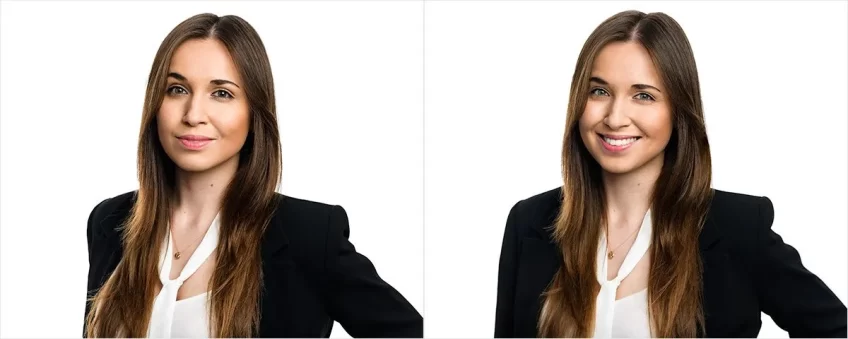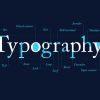In the digital age, images are not just mere pictures; they are the language of our era, often conveying more than words ever could. They capture moments, tell stories, establish brands, and in many cases, form the crux of our online identity. With platforms like LinkedIn, Instagram, and corporate websites becoming integral components of personal and professional branding, the demand for quality photographs has skyrocketed. Yet, amidst this visual revolution, a common area of uncertainty emerges: the distinction between headshots and portraits. To the untrained eye, they might appear similar, but the nuances between them are significant and serve different purposes.
This article demystifies the differences between headshots and portraits. By understanding their distinct characteristics, purposes, and applications, readers can make informed decisions when it comes to capturing or commissioning images for their specific needs.
Table of Contents
What are Headshots?
A headshot is a specific type of photograph primarily aimed at capturing an individual’s face, usually showcasing them in a professional light. Headshots act as visual business cards, representing an individual in a corporate or professional setting. Beyond corporate needs, headshots can serve to enhance and define a personal brand, reflecting an individual’s unique identity in entrepreneurial or creative spaces. Photographers, such as Portland headshots, specialize in finding the right angle to complement anyone and everyone.
Characteristics of a Headshot
Zooming in on the Face
A headshot emphasizes the emotions or demeanor someone conveys, often communicating sincerity and professionalism.
A Clear Vision
Consistency, clarity, and sharpness ensure the image accurately represents the individual without distractions or ambiguities.
Neutral but Noted
A standardized background, usually neutral, ensures the focus remains on the individual, providing a clean and versatile backdrop suitable for various professional applications.
Where You’ll Find Headshots
Business websites, annual reports, and team directories often feature headshots, providing a face to names and roles within an organization.
On platforms like LinkedIn and other professional networking sites, a headshot serves as a virtual introduction, often making the first impression.
For actors and models, their headshot is a foundational component of their portfolio, presenting a clear and professional image to casting directors and agencies.
What are Portraits?
Portraits capture the essence, personality, and mood of an individual. While they can be as simple as a straightforward representation of a person’s face, portraits often dive deeper to tell a story or convey a specific emotion. The background, lighting, pose, and setting all shape the narrative and ambiance of a portrait. Portraits aim to immortalize a moment, feeling, or character in a way that resonates with viewers.
Characteristics of a Portrait
Inclusive Framing Options
Portraits aren’t confined to just the face. They can encompass the full body, focus on the upper half, or even zoom in on facial features, offering flexibility in how the subject is presented.
Diverse Backdrops
Unlike the standardized backgrounds of headshots, portraits thrive on diversity. Whether it’s a serene beach, a bustling urban setting, or a quiet room, the background often plays a major role in setting the mood and context of the portrait.
Emotional Depth and Narrative
Portraits are expressive canvases. They can vividly convey a variety of emotions, be it joy, contemplation, or melancholy. Beyond just emotion, portraits can also narrate a story or revolve around a specific theme, making each one a unique piece of art.
Common Uses of Portraits
Capturing Personal Milestones
Portraits often serve as cherished keepsakes, immortalizing significant life moments, from graduations and birthdays to weddings and anniversaries.
For the Art Enthusiasts
Many portraits find their place in art galleries or exhibitions, admired for their technical excellence, creative vision, or the stories they tell. They stand as testament to the photographer’s and subject’s artistic collaboration.
Magazine and Editorial Imagery
Portraits frequently grace the pages of magazines, both in feature stories and editorials. Their capacity to captivate and engage readers makes them a preferred choice for publications aiming to make a memorable visual impact.
Key Differences between Headshots and Portraits
Focus and Framing
While headshots are primarily concerned with capturing an individual’s face and expression in a close-up, portraits provide a more flexible frame, potentially encompassing the full body, half-body, or any other specific focus. The essence of a headshot is clarity and directness, whereas a portrait can indulge in a broader scope of representation.
Intended Use and Audience
Headshots are tailored for professional contexts such as corporate profiles or networking platforms like LinkedIn. Their primary audience includes potential employers, colleagues, or clients. Portraits, on the other hand, cater to a wider audience, ranging from personal circles admiring a keepsake to art enthusiasts in a gallery.
Flexibility in Artistic Expression
While headshots follow a relatively standardized format with limited room for creative deviations, portraits revel in artistic freedom. Portraits can experiment with mood, setting, lighting, and themes, capturing not just the subject, but also a narrative or emotion.
Technical Specifications and Guidelines
Headshots often come with specific technical guidelines, especially when used for professional purposes. This could mean standard sizes, resolutions, or background colors. Portraits, conversely, offer more leeway in these areas, allowing for variations based on the intended effect or medium of display.
The Significance of Image Selection
Recognizing the Role of Context
Understanding the context in which an image will be used guides the selection process towards appropriateness and relevance.
Professional Expectations
Certain professions or industries have specific requirements for imagery, and meeting these can determine success in those arenas.
Leaving an Impression
Whether it’s for personal satisfaction or an artistic endeavor, the right image can communicate a message or emotion, leaving a memorable mark on its audience.
In the visually driven world of the digital age, distinguishing between headshots and portraits is more than just an academic exercise; it’s the first step in ensuring accurate and impactful self-representation. Whether aiming for a professional milestone or capturing a personal moment, the right image can communicate, resonate, and leave a lasting impression.







